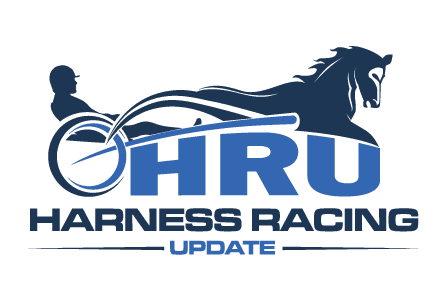Ben White changed the breed even if he doesn’t think so
by Murray Brown
In my conversation with Ben White this past week, I told him that to some extent he had changed the breed. “What are you talking about, I’ve done no such thing” was his response. I said, “Well, you bred, raised and raced The Booger Lady, a mare from rather obscure beginnings to a revered place in harness racing history. She is the third dam of Somebeachsomewhere, a horse who some, including me, think to have been the greatest racehorse and sire that the pacing breed has ever known.”
How did this all come about?
“I was at the 1969 Tattersalls Sale where I encountered Earl Robbins. He told me that he was selling a filly by Adios Paul named Lil Miss Thompson. He said that she was a nice filly, but that she didn’t have much of a pedigree. He was certain that she wasn’t going to bring much, but that he thought that she was nice enough to become a decent race filly.
“He turned out to be right on all counts. She didn’t have much of a pedigree and I bought her for all of a thousand dollars. She turned out to be a pretty decent filly. She took a record of p, 3, T1.59.1 which was pretty good for the time and earned $16,770.
“I liked her enough to keep her as a broodmare and bred her to Albatross in his first season in the stud.
“Did I ever catch heat for that! Had I lost my mind? Why would I think of breeding this ill-bred filly to as great a horse as Albatross was? There were those who thought that both Johnny Simpson and I had gone nuts – me, for breeding her to Albatross and spending that $5,000 stud fee and Simpson for accepting her to a great horse who was very much in demand.
“Her first foal was a lot better than average. His name was Jambooger. He ended up becoming a decent stakes colt. He earned $361,647 and took a record of 1.57.3h. Both were pretty darn good for the time. Her next two foals were decent, they both took 2.00 records which was somewhat the goal in those days.
I then bred her to Steady Star and she had a filly that I named The Booger Lady. She was a very nice filly right from the very start. She never did anything wrong and won her first five starts as a 3-year-old.
“Bob Kaufman who owned Chandelle Farms had been after me to buy her. I finally sold half of her to him for $37,500. We first bred her to Niatross and she had Flight Of Fire one of the many good colts in that super horse’s first crop.
“Lou Guida had told me that if I bred her to Niatross, he would give me $100,000 for the foal she was carrying. True to his word, he did just that. Flight Of Fire was a very nice colt and went on to become a fairly decent sire in Canada.
“When it came time to breed her again, Bob Kaufman wanted to breed her to Albatross, who at the time carried a tag of $75,000. That was too rich for my blood, so Bob bought my remaining half interest for the same initial price of $37,500.
“That was the end of my involvement, but Lil Miss Thompson’s quality production was not done. She subsequently was bred to Cam Fella several times producing her best performer Cam Terrific p, 1.49.3 ($592,594) and another one in Scary Fella ($233,440). But it was with another Cam Fella filly, Where’s Sarah, that The Booger Lady was to insure her place in harness racing history. Where’s Sarah of course became the grandam of the great Somebeachsomewhere.”
Does it surprise you that a mare coming from quite obscure bloodlines became responsible for not only the great Somebeachsomewhere, but also several other quality pacers?
“Yes and no. It’s not often that this occurs. I suppose that more often than not our greatest horses come from our greatest and best-established families. The way I look at it is that the families have to begin somewhere and sometime. They all don’t trace to mares like Miss Bertha C and May Dodge tracing a hundred years or more in the past. Some of them are more current and have started more recently. I’m guessing that there is probably that kind of mare out there somewhere right now.”
Speaking of pedigrees, let’s talk about those of the human species. You are the namesake grandson of the great Ben White who most historians would say belongs in any conversation of the greatest horse trainers ever. Your father, Gibson White, was an excellent horseman who owned the great world champion and Hambletonian winning filly Rosalind 1.56.3/4. What is it you remember most about your illustrious grandfather?
“Not all that much about him himself. I was only 12 years old when he passed away. Sadly, the last couple of his years were plagued with dementia. It was weird. Some days he might show up at the stable and not even know who my dad was. Then the next day, he would be recounting stories of some of the great horses with which he had been associated — not only those, but also those which they raced against. He’d speak of their breeding and the equipment they wore — which was rarely very much — their quirks and plusses and just about everything about them.
“Over a period of 16 years he trained five Hambletonian winners and drove four of them in winning the race. It began in 1927 with Iosola’s Worthy which was driven by Marvin Childs. He then drove and trained his next four winners: Mary Reynolds in 1933, Rosalind in 1936, The Ambassador in 1942, and his last one, the best horse which he had ever sat behind, the ill-fated Volo Song in 1943. There are numerous horsemen who would tell you that Volo Song, at least to that point in time, was the greatest trotter that ever lived.
“My father was an avid photographer. It was rare that he didn’t have a camera with him. Through him and his pictures I have amassed a pictorial history of racing through his lifetime. I post a picture from his collection every Sunday in Harness Racing History. I could live a long, long time before I’d ever run out of them. In all the hundreds of pictures I have of my grandfather, there is not even one where his whip is anywhere but over his shoulder.”
Let’s speak about your dad and the greatest horse with which he was associated, Rosalind.
“The story about Rosalind is best found in Marguerite Henry’s wonderful book Born To Trot, published in 1950 but still in print and available. It’s a must for any harness racing fan.
“It recounts her story as one of the greatest race fillies ever. A sub plot to the story is that dad was in the hospital trying to recover from tuberculosis while much of her race career was taking place.”
How about Rosalind as a broodmare?
“She was nowhere near as good in the breeding shed as she was on the racetrack. She had six foals, all of them fillies. The best of the group was a Dean Hanover filly named Deanna, who was a champion as a 2-year-old, but due to the many vagaries in this breeding business, was destined to never have a foal. After she died, dad had a post mortem done on her and they discovered that she didn’t have ovaries.
“Rosalind died while at Hanover Shoe Farms. She is buried in the cemetery opposite the main farm.
“If you think racing is tough, and it indeed is, then try breeding.”
Let’s switch gears. You are a born and raised Kentucky hardboot. I know you are an avid University of Kentucky basketball fan. Are you pleased with the progress of this year’s team?
“Yes indeed. They are a fun team to follow and watch. I was never that much of a John Calipari fan when he was at the helm. I thought that the results were disappointing, when one considers the tremendous amount of talent he had playing for him. Just look at his players in the NBA today. You could probably put together an All-Star Team of just UK players.
“Even though their present coach, Mark Pope, might not have been their first option, he has done a fantastic job in putting this squad together – probably better than the first choices would have done.
“Speaking of pedigree, he comes to the UK job with a great one. He played for and was the captain of the 1995-96 team that won the NCAA Championship. He is obviously very smart. I doubt that there is another coach anywhere who left medical school at Columbia University to pursue a coaching career.”
You are about to turn 80. What is life like for you these days?
“I would say it’s okay. It has been 17 years since I last trained. But I like to stay on top of the game. I begin each day by looking at the previous day’s race results on the USTA website. I sometimes visit with the horsemen at Southern Oaks and Spring Garden Ranch. I have some issues with my back which I try to help by walking two or three miles with my dog Gracie, who incidentally is not for sale, each morning.
“Life could be a whole lot worse.”
















